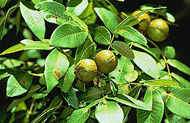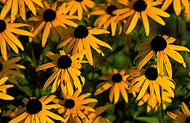Benefits of Using Native Plants
go.ncsu.edu/readext?830049
en Español / em Português
El inglés es el idioma de control de esta página. En la medida en que haya algún conflicto entre la traducción al inglés y la traducción, el inglés prevalece.
Al hacer clic en el enlace de traducción se activa un servicio de traducción gratuito para convertir la página al español. Al igual que con cualquier traducción por Internet, la conversión no es sensible al contexto y puede que no traduzca el texto en su significado original. NC State Extension no garantiza la exactitud del texto traducido. Por favor, tenga en cuenta que algunas aplicaciones y/o servicios pueden no funcionar como se espera cuando se traducen.
Português
Inglês é o idioma de controle desta página. Na medida que haja algum conflito entre o texto original em Inglês e a tradução, o Inglês prevalece.
Ao clicar no link de tradução, um serviço gratuito de tradução será ativado para converter a página para o Português. Como em qualquer tradução pela internet, a conversão não é sensivel ao contexto e pode não ocorrer a tradução para o significado orginal. O serviço de Extensão da Carolina do Norte (NC State Extension) não garante a exatidão do texto traduzido. Por favor, observe que algumas funções ou serviços podem não funcionar como esperado após a tradução.
English
English is the controlling language of this page. To the extent there is any conflict between the English text and the translation, English controls.
Clicking on the translation link activates a free translation service to convert the page to Spanish. As with any Internet translation, the conversion is not context-sensitive and may not translate the text to its original meaning. NC State Extension does not guarantee the accuracy of the translated text. Please note that some applications and/or services may not function as expected when translated.
Collapse ▲There are many benefits to using native plants in your landscape — for you, for your community, and for wildlife.
Wildlife

Hickory nuts are valuable food for squirrels.
With habitat disappearing at an alarming rate, you can help provide wildlife with an oasis of the habitat they need to thrive. The native plants that you use can meet the needs, including food and cover, of native wildlife without causing long-term damage to local plant communities. With the right diversity of native plants in your urban landscape, you can provide:
- Protective cover for many animals.
- Seeds, nuts, and fruits for squirrels and other mammals.
- Seeds, fruits, and insects for birds.
- Nectar for hummingbirds and butterflies.
- Larval host plants for butterfly caterpillars.
Prevent Introduction of Invasive Plants
The use of only native plants in your landscape helps limit the chances that potentially invasive, non-native plant species will be introduced into the environment around your home. Many of the invasive, non-native plant species present in the South’s natural areas today were introduced as landscape plantings many decades ago. Continued introduction of new non-native plants into suburban landscapes will result in many new invasive plants in the future.
Beauty

Orange coneflower is attractive to people and wildlife.
Many native plants produce showy flowers, abundant fruits and seeds, and brilliant fall foliage. By planting native plants, you will have a beautiful yard that is friendly to wildlife.
Low Maintenance
Native plants generally grow well and require little care when grown on proper soils under the right environmental conditions. By choosing the right native plants, you may be able to use fewer pesticides and less water.
Community
As more people use native plants in their urban landscaping, it adds to the available habitat for wildlife and benefits the community as a whole. Going native helps save our natural heritage for future generations.
To find out how you can get started, go to How to Create Wildlife Friendly Landscapes.


